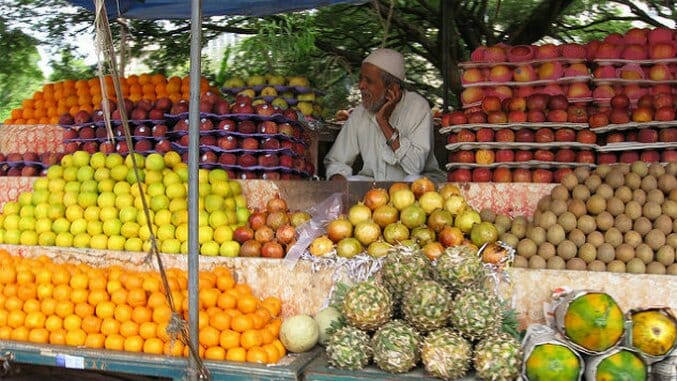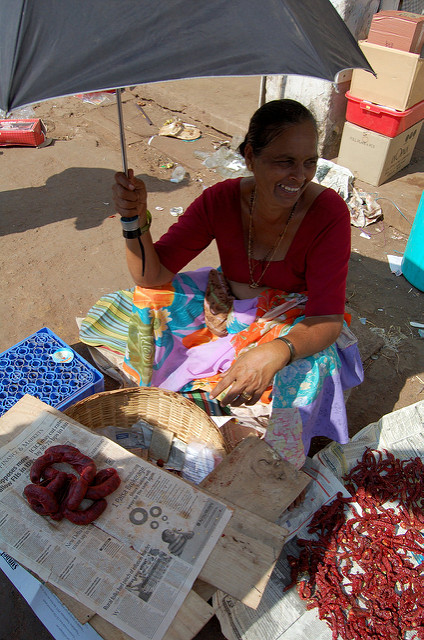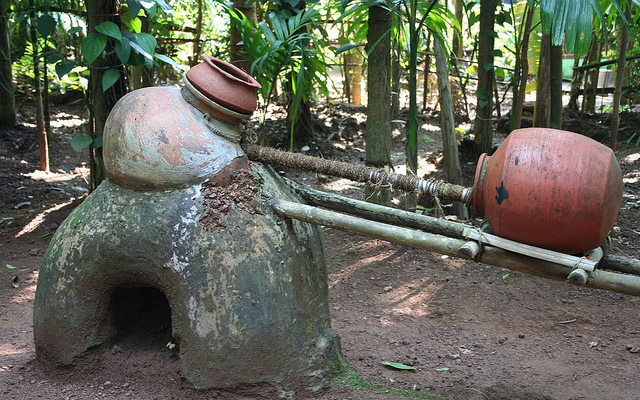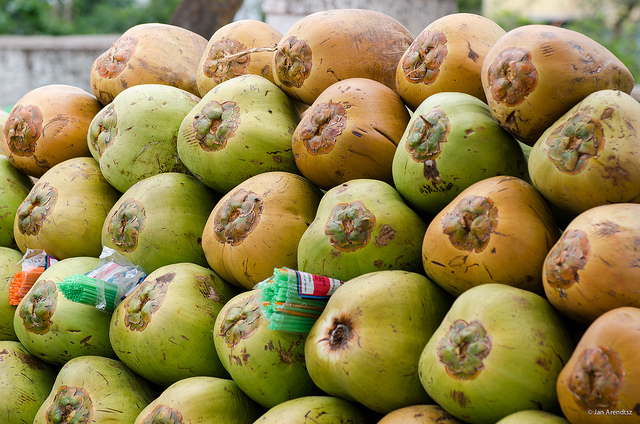
High on everybody’s to-do list when holidaying in Goa is a binge-fest on the state’s incredible cuisine. The joys of Goa include everything from the freshest seafood and spicy preparations with beef and pork, to mopping it up with rustic locally-made bread called pao or poee, to tasting a bit of coconut in everything – grated, in curry pastes, and in desserts too!
While your holiday is likely to be abundantly punctuated with food and drink, there are also a lot of snack souvenirs you can bring back for others to taste — or let’s be real — just finish in the airport before you leave. These are little bits to remember this sunshine state by, long after your holiday is done.
Chouriço

Photo by Scott Dexter CC BY-SA
Also called Goa sausages or chorizo locally, this pork sausage is distinctly Goan in that it is homemade and has a heady fragrance from being spiced, smoked and sundried with a bunch of heady flavors infused within. Available in strings of round, bead-like sausages they’re also commonly called rosary sausages. A rich earthy red colour, they’re spiced with ginger, garlic, red chillies, cinnamon and cumin that lend an intense, deep flavor. To offset the heat slightly is a hit of tanginess that comes from being profusely doused in vinegar that also helps the sausages keep for long periods of time without refrigeration. Perfect for your long flight back home!
Cashew Nuts

Photo by Rev Stan CC BY
An immensely popular produce of the state is the cashew nut; however, it was not always indigenous to Goa. It is believed that the cashew apple (the fruit) was imported by the Portuguese, from North Eastern Brazil in the early 1700s, along with tomatoes and chilies. Today, it is a predominant cash crop and stores exclusively selling cashew nuts can be found all across the state. The cashew apple when fresh is used in making feni, the local firewater, while the nut is extracted from the apple, processed and enjoyed on its own. Cashew nuts are available in a range of varieties – from raw, with or without the skin, to skinned, roasted, fried or even salted and spiced. They make a great bar snack and can be used in cooking too.
Feni

Photo by Nagarjun Kandukuru CC BY
This heady locally brewed tipple is to Goa what Champagne is to France and Mezcal is to Mexico, and is an indelible part of Goa’s history and culinary tradition. Classified a country liquor, it is brewed from either coconuts or cashew apples, but only produced, bottled and widely sold within Goa. The cashew variant is a crisp white spirit, and it is best enjoyed with citric mixers – either tonic water, lemon soda or orange juice – and a sprinkling of salt. Sometimes a slit green chili is added for a little extra zing. In its coconutty avatar, it blends well with more tropical flavors. Steer clear of mass-produced varieties that are sold at very low prices, and choose more premium brands (upwards of 509 rupees, which is approximately $7 U.S. dollars) that can be enjoyed either as a standalone drink or in your favorite cocktail.
Coconut Vinegar

Photo by Jan Arendtsz CC BY ND
Much of Goan food is incomplete without a splash of this variety of vinegar that has a distinctly fruity but expected sour note. This vinegar is made from coconut toddy that is processed and fermented for up to six months, giving it a rich brown hue and an unparalleled depth of flavor. The use of this strong souring agent probably goes back to the Portuguese influences on the cuisine, and is used to date when making a traditional vindaloo or sorpotel – popular meat curries.
Bebinca
Photo by Reuben Strayer CC BY-SA
This rich, layered pudding of sorts is a traditional Goan Christmas dessert, but is synonymous with Goan food, and available in packaged form through out the year, in supermarkets and grocery stores. But if you can get your hands on the traditional, homemade kind, expect a dense, sticky cake-like pudding made of layered flour, eggs, coconut milk and sugar. The distinctive flavor comes from the use of nutmeg and ghee (clarified butter) and the labor of love that is “building” this dessert layer by layer. Baked into a solid but fudgy consistency, bebinca can be cut into slices and served with vanilla ice cream or eaten as is.
Revati Upadhya, based in Goa, India, writes on food, travel, culture and lifestyle.
Top and lead photos by Aaron C CC BY-SA